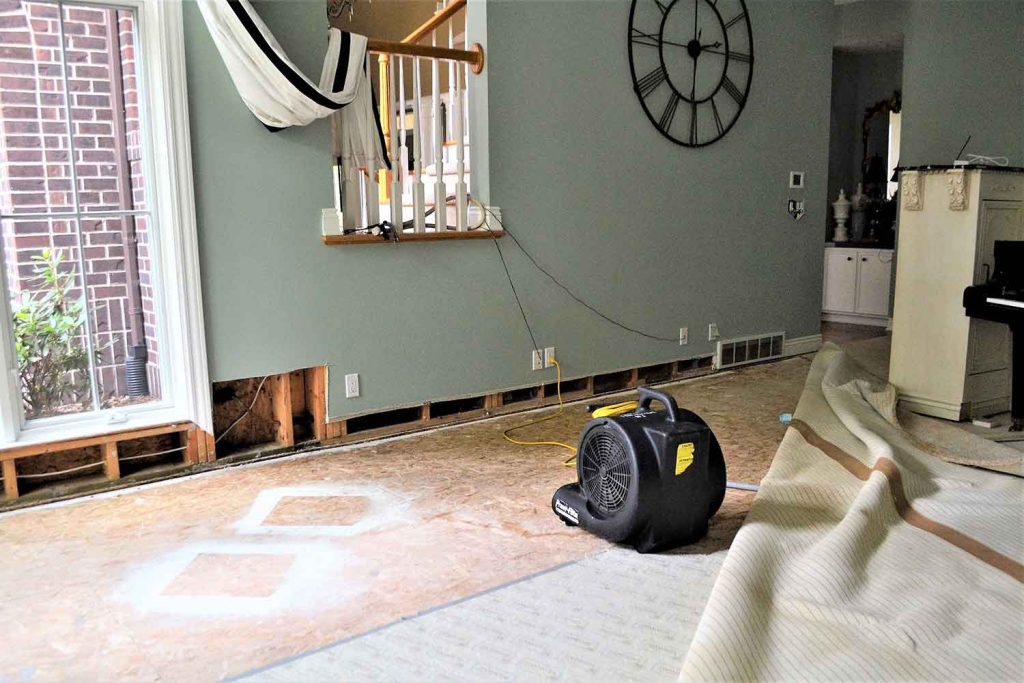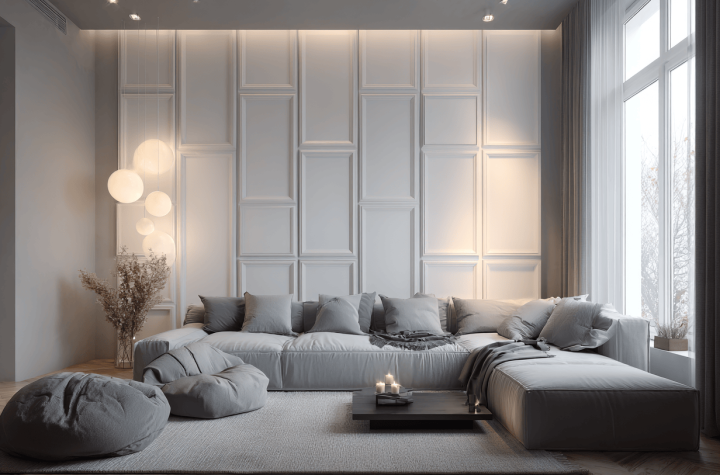
When tackling a basement renovation, you want to focus on materials that stand up to flooding and moisture. Choosing the right components can mean the difference between a dry, functional space and a damp, troublesome one. Waterproof flooring options like luxury vinyl planks and ceramic tiles are excellent choices, while mold-resistant drywall and cement board offer solid wall solutions. But there’s more to take into account than just floors and walls. What about insulation and furnishings? By exploring the best flood-resistant items, you can guarantee your basement remains a safe, long-lasting haven. Ready to discover how to protect your investment further?
Waterproof Flooring Options
When renovating your basement to make it flood-resistant, choosing the right waterproof flooring is crucial. You want a material that can withstand water exposure without damage.
Consider luxury vinyl planks or tiles, which aren’t only waterproof but also mimic the look of hardwood or stone. They’re easy to install and maintain, making them a practical choice for homeowners aiming to safeguard their basements from sewer backups, unexpected flooding and more.
Another excellent option is ceramic or porcelain tile. Both materials are highly water-resistant and offer a variety of styles and colors to match your aesthetic preferences.
These tiles are durable and stand up well to moisture, making them ideal for basements prone to flooding. Remember to use epoxy grout to guarantee maximum waterproofing.
If you prefer a softer surface, rubber flooring might be the way to go. It’s naturally water-resistant, provides good insulation, and adds a comfortable feel underfoot.
Plus, it’s available in various colors and patterns, so you’re not limited in design choices.
Ultimately, the key is to select flooring that not only resists water but also complements your basement’s overall look. With these options, you’ll be well-prepared for any unexpected water challenges.
Moisture-Resistant Wall Materials
While selecting flooring is essential, don’t overlook the importance of moisture-resistant wall materials in your basement renovation. Walls are just as vulnerable to water damage as floors, and choosing the right materials can save you from future headaches.
Start by considering mold-resistant drywall, often called green board or purple board, which is specifically designed to withstand damp conditions. Unlike regular drywall, these versions have a special coating that resists moisture and inhibits mold growth.
Another great option is cement board, which is highly durable and resistant to water. It’s commonly used in areas prone to moisture, like bathrooms, making it an excellent choice for basements. Cement board provides a strong foundation for tiles and other finishes, ensuring your walls stay intact even in the event of minor flooding.
If you’re looking for something more decorative, consider using water-resistant wall panels. Made from materials like PVC or fiberglass, these panels not only resist water but also offer easy installation and maintenance. They come in various designs and colors, allowing you to achieve the aesthetic you want without compromising on functionality.
Durable Insulation Choices
Insulating your basement properly is essential not only for energy efficiency but also for preventing moisture issues. When choosing insulation, you need materials that can withstand potential flooding and resist water damage.
Closed-cell spray foam is a top choice. It offers excellent thermal resistance and acts as a moisture barrier, preventing water infiltration. Plus, it doesn’t absorb water, reducing the risk of mold growth.
Rigid foam boards, such as polyisocyanurate or extruded polystyrene, are also excellent options. They resist water absorption and provide a high R-value, which means they insulate well against temperature changes. These boards are easy to install and can be cut to fit any space, making them versatile for basement renovations.
Don’t overlook the value of mineral wool, either. While it may absorb some water, it dries out quickly and maintains its insulating properties. This makes it a practical choice if you’re looking for something fire-resistant and soundproof.
When selecting insulation, verify it’s installed correctly to maximize flood resistance. By picking the right durable insulation materials, you’ll protect your basement from moisture and enhance its overall comfort and efficiency.
Flood-Proofing Sealants
To effectively shield your basement from water damage, flood-proofing sealants play an essential role. These sealants create a watertight barrier on walls, floors, and even around windows or doors. When you apply them, they help prevent water infiltration during heavy rains, reducing the risk of mold, mildew, and structural damage.
Start by selecting a high-quality sealant specifically designed for flood resistance. Look for products that are both water-repellent and flexible. Flexible sealants can expand and contract with temperature changes, maintaining their protective qualities over time.
Before applying, clean and dry the surfaces thoroughly to guarantee proper adhesion. Follow the manufacturer’s instructions closely to achieve the best results.
You should focus on sealing any potential entry points for water, such as cracks, seams, or joints. Pay special attention to the areas where the walls meet the floor, as these are common weak spots.
Additionally, verify all existing gaps around basement windows and doors are sealed. Regularly inspect and maintain the sealant to address any wear and tear. By doing so, you’ll enhance your basement’s flood resilience, providing long-lasting protection against water damage.
Water-Resilient Furnishings
When renovating your basement, choosing water-resilient furnishings is essential to minimize potential water damage. You want to guarantee that your investment stands up to unexpected flooding.
Opting for materials like metal or plastic can make a big difference. Metal furniture, such as steel or aluminum, resists water damage and can be easily cleaned. These materials are less likely to warp or rot compared to traditional wood.
Consider plastic furnishings as they’re lightweight, affordable, and water-resistant. Plastic chairs and tables can withstand damp environments without deteriorating. For a cozier feel, look into furniture with removable, washable covers. Synthetic fabrics like polyester or acrylic dry quickly and resist water absorption, making them ideal for flood-prone areas.
When it comes to flooring, area rugs made from synthetic fibers are a smart choice. They’re easy to clean, and you can roll them up and move them if water levels rise. Avoid rugs with natural fibers like wool or cotton, which can absorb moisture and develop mold.






More Stories
Singapore Apartments Are Getting Smaller — Wall Panels Might Just Be the Smartest Upgrade Yet
Open Fire Maintenance in Lancashire – Don’t Get Burned by Neglect
Keeping Businesses Running Smoothly Through Expert Flood Restoration Support